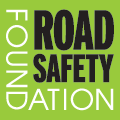MEASURING TO MANAGE – 2013 RESULTS
TRACKING THE SAFETY OF BRITAIN’S MAJOR ROAD NETWORK
The government has recognised Britain is falling behind other countries and announced the “biggest ever upgrade of our existing roads worth up to £50bn over the next generation”.
With road crashes costing 2% of GDP, key competitors are measuring and managing safety explicitly on roads of economic importance. Roads like cars are now routinely safety rated worldwide. Road managers are now given clear goals for the safety performance that new investment is expected to deliver.
This report measures and maps the risk of death and serious injury road uses face on the British network where the majority of lives are lost – on motorways and ‘A’ roads outside cities. It shows road travel is getting measurably safer, particularly because of improving vehicle safety.
Most vehicles now have airbags and crumple zones and new cars typically have a 4- or 5-star safety rating. However patterns of safety are changing as a result.
Single carriageway roads are now 7 times more risky than motorways. As the flowers by the roadside attest, the main crash type causing death is running off the road. The main crash type causing serious injury are brutal junction impacts.
The report highlights Britain’s most improved road stretches where road managers have often paid just attention to road layout and detail to prevent significant death and serious trauma.
The report shows that Britain’s safest regions to live are where single carriageways are safer and the majority of travel is on safer motorway. It shows the most improved region is the east of England and the least safe is the East Midlands.
Britain must now join leading countries and set clear goals for road managers to make the infrastructure directly under their control safer. For example, both the Netherlands and New Zealand now state clear safety goals for their national road managers to achieve 3 or 4 star minimum infrastructure safety ratings by 2020. Sweden says targeting safety in this way means it now costs 5% of what it did to save a life.
This report provides one key measure of Britain’s overall network safety performance from the combination of safer driving, safer vehicles and safer roads. But too much British improvement relies on improving vehicles not systematic improvement in infrastructure safety. The promised long term roads investment brings an exciting new opportunity to make our roads safer but it will require those accountable for infrastructure safety to adopt world class techniques to measure and manage their contribution in a way in which public and Parliament can have confidence.
- Download the full report as page spread
- Download the full report as single page
- Download the Risk Rating map for Britain
- Download the Risk Rating map for Britain with Parliamentary Constituency boundaries
- Download the Risk Rating map for Scotland
- Download the Risk Rating map for Yorkshire & the Humber
- Download the Risk Rating map for West Midlands
- Download the Risk Rating map for East Midlands
- Download the Risk Rating map for North-West
- Download the Risk Rating map for North-East
- Download the Risk Rating map for East of England
- Download the Risk Rating map for Wales
- Download the Risk Rating map for South-East
- Download the Risk Rating map for South-West

